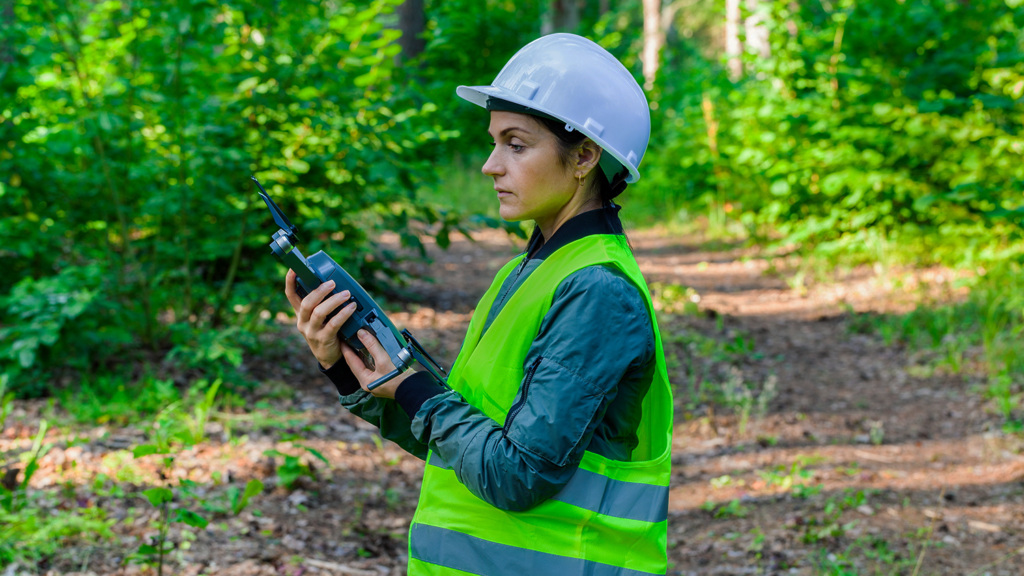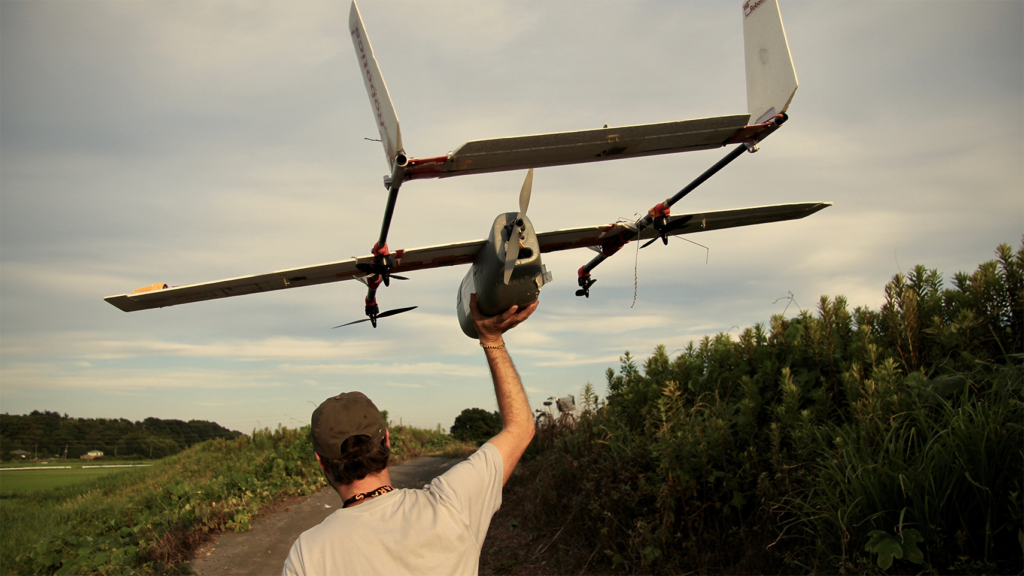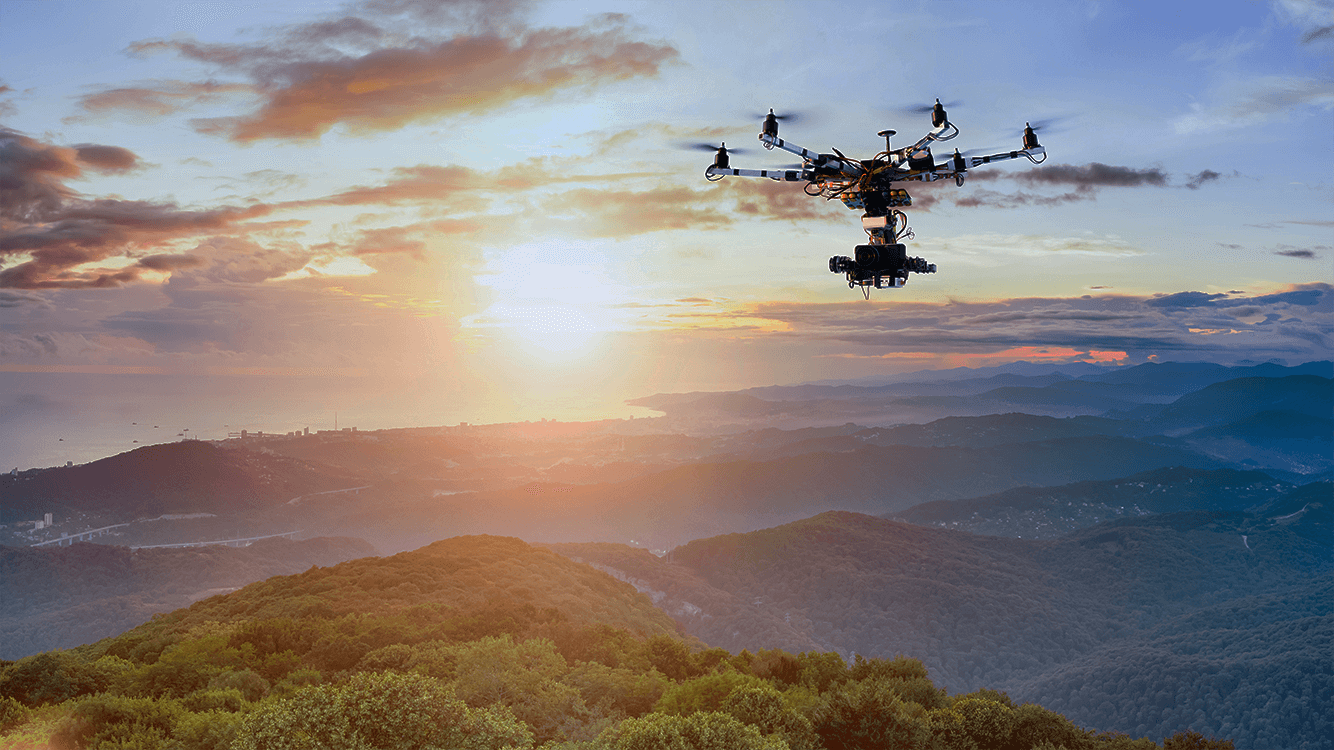The forestry industry is going through a significant transformation, as companies are increasingly looking for new ways to survey land and maintain it.
To this end, one of the most exciting technologies that public and private companies are now using to streamline operations is unmanned aerial vehicles (UAVs)—more commonly known as drones.
These days, drones are having a major impact on the forestry industry. That being the case, it’s a good idea to know the benefits they offer and the different types that companies are now using on a regular basis, which will be covered in this post.
What Are the Challenges of Forest Management?
Suffice it to say that managing a forest is a never-ending job—and one that requires constant maintenance and surveillance. After all, these critical ecosystems are at risk from a variety of natural and human-caused threats.
Local communities depend heavily on forestry organizations to keep their woodlands safe and secure. Every day, forestry providers struggle with a number of issues, which we’ll briefly examine next.

Climate Change
Climate change is hitting forests in a dramatic way, impacting everything from wildlife and insect growth and habitation to the proliferation of invasive species and wildfires.
As such, forestry providers need to keep close tabs on how forests are changing by collecting data and monitoring changes over time.
This data can help policymakers and community members make smarter choices and conserve resources more effectively.
Deforestation
Losing a tree results in the loss of carbon filtering potential. At the same time, cutting down a tree releases all of its carbon into the air—which can be very bad for the environment.
Forestry providers need to keep a close watch on deforestation, especially in their local communities, to reduce its impact, establish protected areas, and provide local awareness about the negative impact of tree loss.
Keeping Track of Changing Landscapes
Land borders can change significantly over time, which is problematic for public and private landowners. For example, rivers can change course, rock formations and hills can shift, and fields can disappear due to growth.
Forestry providers are using new technologies like drones to capture data and keep close tabs on changing forest topographies for more effective surveying.
Staffing Shortages
Forests today are facing many different challenges. But many organizations are struggling to attract, train, and retain workers. And this makes forestry immensely difficult. For example, pundits predict that the forestry industry will have a deficit of roughly 7,000 loggers by 2026.
Staffing shortages are forcing forestry companies to get more creative about the tools and technologies they use. In this light, drones are helping them accomplish more with fewer resources.
Forestry providers are using new technologies like drones to capture data and keep close tabs on changing forest topographies for more effective surveying.
Supply Chain Issues
Ongoing inefficiencies in the global supply chain make it difficult to access critical forestry materials and equipment. It can also be difficult to move lumber and other materials from point to point. Unfortunately, some analysts predict global supply chain dysfunction could extend well into 2022 and beyond.
Benefits of Using Forestry Drones for Forest Management
A growing number of forestry teams are integrating drones into their operations and using them to reduce workloads and improve planning and data collection. Drones offer the following benefits for forestry teams.
Produce a Lower Carbon Footprint
Using drones can help forestry teams be more eco-friendly by reducing truck rollouts and lowering carbon emissions. As such, forestry companies can reduce their impact on the environment and do their part to preserve the planet for future generations.
Improve Aerial Surveillance
In the past, forestry teams had to rely on crewed aircraft, balloons, and satellites to capture aerial photography and video footage.
Drones improve aerial surveillance, allowing forestry teams to capture more footage from different angles and perspectives. Drones are also much easier and more cost-effective to deploy, making them more suitable for daily use.
Transport Supplies
Forestry teams often have to spend long amounts of time in the wilderness. Companies can use drones to safely and efficiently deliver everyday items like food, medical supplies, tools, and other critical items to team members.
Fight Forest Fires
Many organizations are now using drones to detect and eliminate forest fires in remote areas. Drones can quickly analyze fires when they break out and provide instant data to help enforcement teams determine the resources they need at the scene.
Optimize Tree Location
Forestry departments need to be careful when planting trees to ensure the new saplings benefit the forest and ultimately achieve maximum growth. Drones can collect a variety of data points and help with predictive planning and analysis to increase the chances of this happening.
Many organizations are now using drones to detect and eliminate forest fires in remote areas.

Best Forestry Drones
There are several different types of drones on the market, and not all of them are suitable for forestry operations. Here are some of the common types of drones that forestry companies use to assist with daily operations.
Multi-Rotor Drones
Like the name suggests, multi-rotor drones have several rotors that help stabilize the craft and achieve greater balance mid-flight. While multi-rotor drones are great for taking high-quality images, they consume more energy and therefore reduce overall flight time—making them better suited for short projects in small areas.
Single-Rotor Drones
Single-rotor drones typically only have one rotor and exert powerful thrust. These useful drones are capable of flying for long periods of time, making them great for large-scale forestry projects and daily monitoring.
Fixed-Wing Drones
Fixed-wing drones don’t use rotors. Instead, they have wings like an airplane. These drones are typically used for long-term flights and capturing data over large expanses of land. Fixed-wing drones require far less power than rotor-based devices, making them an ideal choice for pilots who want their drones to fly for longer periods of time.
Hybrid Drones
Hybrid drones bring together fixed-wing and rotor models, providing greater balance and support while also enabling long-distance flying. The only downside to hybrid drones is that they are much more expensive than traditional UAVs.
What to Look for in Forestry Drones
It’s important to avoid rushing the drone-buying process. Drones can vary significantly in terms of the materials they use and their functions.
When searching for a solution to your drone problem, keep the following criteria in mind.
Ease of Deployment
Some drones come ready to fly out of the box while others require assembly. Some common examples include bind and fly (BNF), plug and play (PNP), and almost ready to fly (ARF).
If you purchase drones that require advanced assembly, make sure you have the in-house resources or third-party support needed to put them together and maintain them.
Weather Suitability
It’s important to realize that not all drones come with all-weather functionality. As such, it’s important to select drones that align with your local weather conditions, especially if you operate in areas with extreme heat or cold.
Acceptable Range
To be sure, drones can vary drastically in terms of how much ground they can cover. Some can only fly around 30 to 40 feet from a transmitter, making them unusable for large areas. If you intend on flying drones over a large forested area, you need to find drones that can operate across greater distances.
BVLOS
When flying a drone, the vehicle has to remain in the visual line of sight (VLOS) at all times. This can make it hard to operate drones in forests with heavy canopies or mountains and hills.
If you’re working in a dense forest, it’s a good idea to consider beyond visual line of sight (BVLOS) drones, which can enable you to fly in areas with heavy obstructions.
Go BVLOS With Iris Automation
Iris Automation is leading the industry in BVLOS technology and also helping companies maximize their investments in UAVs.
With Iris Automation, your forestry company can expand its operations. At the same time, you can improve efficiency while complying with the latest BVLOS standards, too.
For further reading, check out some popular use cases for BVLOS technology.
This post was written by Justin Reynolds. Justin is a freelance writer who enjoys telling stories about how technology, science, and creativity can help workers be more productive. In his spare time, he likes seeing or playing live music, hiking, and traveling.

